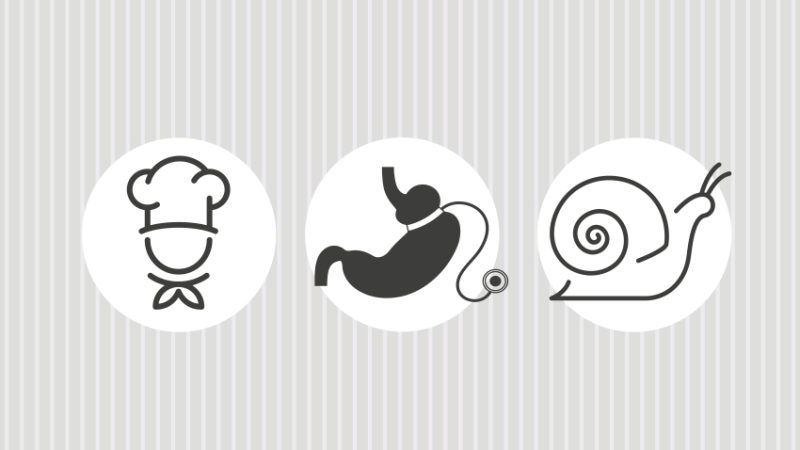Forget Multiple ‘New School Year Resolutions’ – Just Change One Thing

It's tempting to start the new school year with a long list of resolutions, says Alex Quigley – but sticking to a single change might prove more effective…

It’s that time of year again when a new school year stretches ahead. And as the summer tan-lines fade, our anxieties start bubbling to the surface. Tentatively, we look at the year ahead with the hope of improving our teaching, better managing our workload and seeing our students achieve great things, beyond what they ever thought possible.
So we approach the school year just like we approach the new calendar year, with ambitious resolutions. The problem? A massive 92% of New Year’s resolutions fail, and our attempts to improve our teaching can do so, too. Come on, admit it – you’ve joined a gym in January before, haven’t you? How long did that last? Alas, the majority of newly minted members – four out of five people – fail to stick to their new habit.
It’s important to learn from our resolution failures. For the best of reasons – our students – we want to get better at every aspect of our practice, and so we often trial too many new ideas. By launching enthusiastically, with great effort, into trialling lots of new ideas, we actually reduce our chances of success. Just like at New Year, we join the gym and start the fad diet, when we’d be better off simply having one less sugar in our coffee each day.
We need to exercise the ‘Pareto principle’ – otherwise known as the ‘law of the valuable few’. It proffers the notion that roughly 80% of an effect comes from a mere 20% of the causes. The application to our teaching practice is obvious.
Straight to it
Our million-dollar question then is what is the secret of our 20%? The answer is deceptively simple – we need to get students to think really hard.
To do this, we need to distil the dizzying complexity of teaching into simple actions, like giving clear, memorable explanations and asking really probing questions that get our students’ brains whirring.
Last year, my 13th in the classroom, this approach led me to attempt the singular improvement in my practice of asking better questions. It sounds simple, but we ask between 300 and 500 questions a day and seldom think hard about their quality.
Despite being beset by the usual busyness of marking and more, I set about deliberately planning my questions. I started by seeking out some evidence, before getting students to first record the number of questions I asked (often over a 50 in a single lesson). I then dug further to find out how many probing open questions I was asking.
Quickly, I began to think harder and reflect more consciously upon the sequences of questions I was deploying, whilst targeting my questions more deliberately at individuals in lessons. With a little reflective lesson observation, I was able to identify patterns of student responses and see distinct improvements in students’ extended writing.
Of course, I wanted to get better at so much more so that my teaching was brilliant, but by being focused and evaluating a few strategies more deliberately, I was able to actually and demonstrably improve.
Keep going
Even once we’ve selected our focus, we’re all likely to need a little support at times, just like those January gym newbies. Here, then, are some strategies we can deploy that might help us sustain the improvement of our practice:
Plan to improve It sounds so obvious, but as we are so busy planning, teaching, marking and more, we can forget to concentrate on actually getting better at doing all of the above. Hopefully we have a CPD model that helps us along, but if we don’t, we can do some DIY. We can develop one singular strategy – seeking out evidence, trialling, tweaking and improving – for a whole term.
Find a time and a place To stick to developing this one strategy, you can help yourself by finding a window in your working week to concentrate upon it. Perhaps your Wednesday period 1 is an oasis of calm, or you happily beaver away before school starts? Hone your strategy in the same place and at the same time each week.
Tell a friend As with any resolution, a little help from our friends can make all the difference. By committing to our singular improvement publicly, we help ourselves stick with it. Ideally, a teacher or two will help you out and share some of their ideas as well.
Make a record We are forever recording data, I know, but we need to record continually to give structure to our reflections. It can be quick and needn’t be burdensome. If we leave our responses down to memory, we may well fall prey to ‘confirmation bias’ – i.e. believe what we want to believe!
…And repeat. Genuine self-improvement, especially at a task as difficult as teaching, is hard work, and failure is a necessary step in the process. Fail lots, and then reflect before failing better. By the end of the school year, with a singular well-practised habit developed, you will likely find yourself a better, and even happier teacher.
For more information, visit theconfidentteacher.com or follow @HuntingEnglish.











